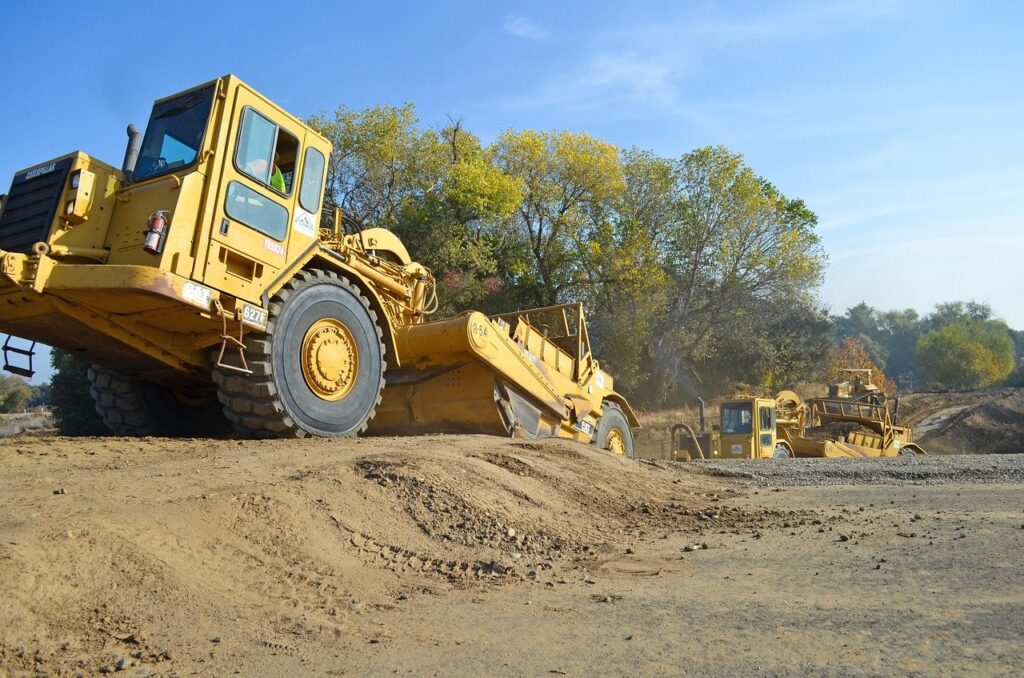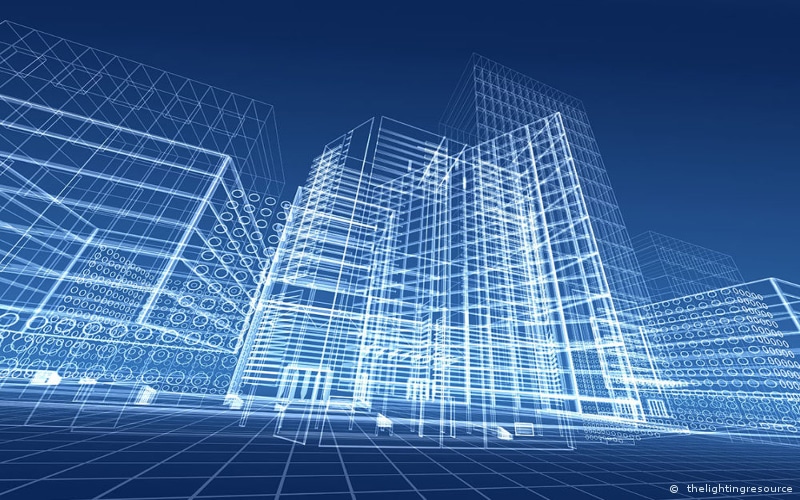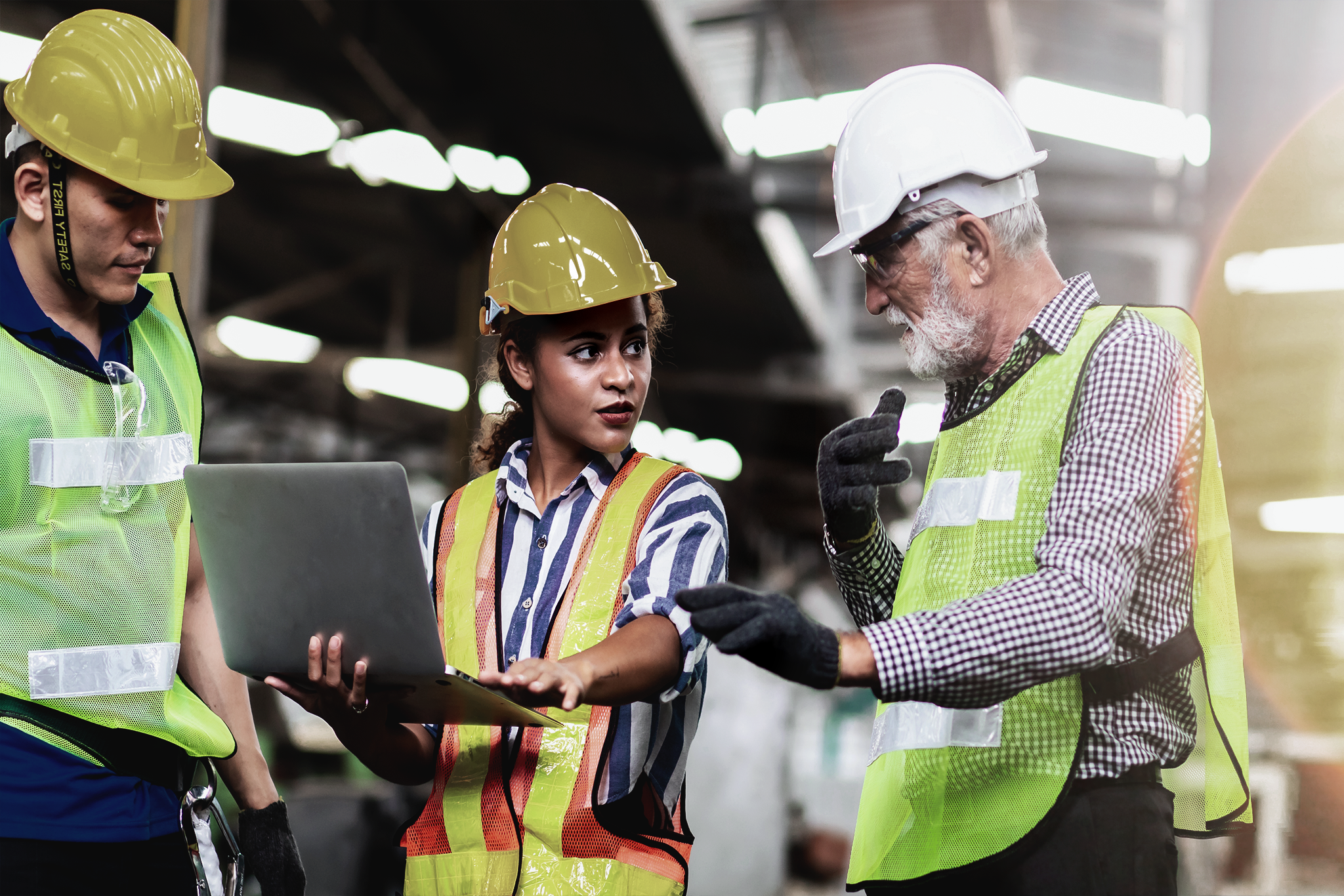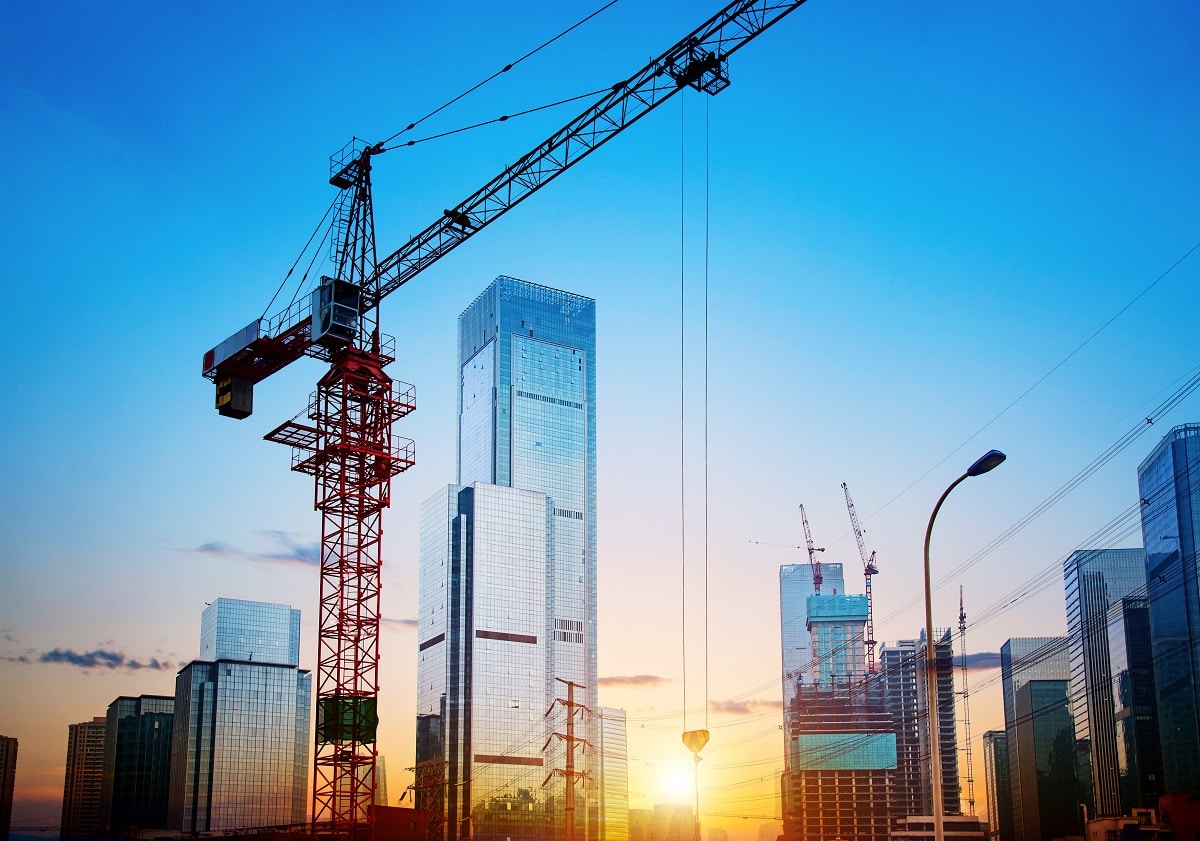The past decade the construction industry has seen the growth of two important trends that have been revolutionising the world’s approach to design and construction — BIM tools and green building.
In most European countries, Northern America, Australia, and some parts of Asia, the green building movement has grown a lot within the construction industry. The adoption of green building strategies is mainly driven by concerns about climate change and non-renewable energy use but also of economic and ergonomic reasons like increased building efficiency and improved construction performance also play a role. This adoption is also currently encouraged by governments with mandates and various incentives.
Over the last couple of years, BIM adoption has seen quite a significant growth in the sector, and it has been impacting design and construction practices at a fundamental level. Seeing the value of BIM, more and more firms are migrating their practice to the BIM process. This approach enables stakeholders to participate early in the design process and maximises the use of prefabrication thereby optimising the construction phase while staying within budget restraints.
Both trends have been advancing independently of each other, but industry leaders have been finding optimum results in their combined work. The objective of green design is to improve building performance while BIM and BIM-related technology or tools aim to provide the best information available at each phase of design and construction to effect the best possible building performance.
Further reading: Why Are Green Buildings Important?
Green design is best delivered through an integrated design process while BIM adoption is due to its capability to facilitate integrated design. BIM models and tools make the necessary information available to manufacturers that allow maximum use of prefabrication, thereby doing away with waste and making the process greener and faster.
Realising green objectives
Green firms (companies with more than 75% of green projects) report that they “achieve more than 75% of BIM’s potential for their green objectives — a rate three times higher than that of general respondents (8%)” (McGraw-Hill Construction, 2010). Major players in the construction industry agree with these numbers and say that to realise green objectives, they have to tap into the full potential of BIM. Apparently, there is a significant overlap between advanced BIM users and early and intense adopters of green building. The takeaway here: growth in green building will lead to higher BIM adoption.
The use of BIM for green projects has grown since as it was expected with a 78% rate within 2010 to 2013. This growth appropriately demonstrates BIM’s potential in improving green construction and at the same time reflects the growth of green building within contractors since they make up the majority of new Green BIM practitioners. Clients are also important drivers in Green BIM use — 36% of companies respond that consumer demand would be the reason they will use Green BIM for future projects. The client factor seems to be most important for non-practicing firms to start using Green BIM.
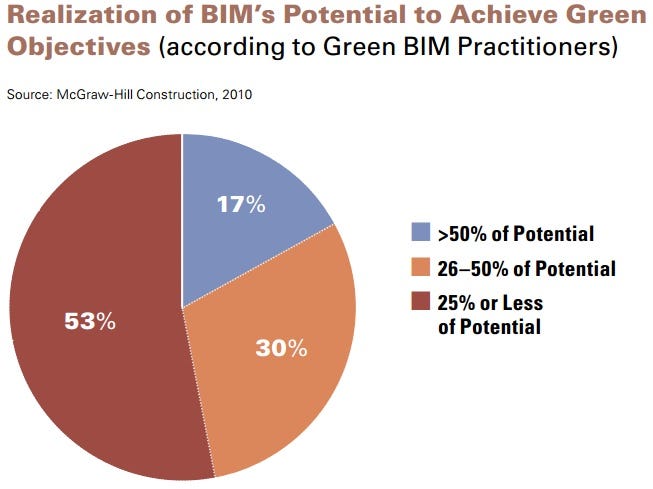
This now leads to the significance in educating project owners regarding the benefits offered by BIM in sustainable projects and also in overall construction. Having access to tools that could show them their building’s performance would likely increase their interests in BIM and green construction. Current requirements set up by organisational consensus (the National BIM Standards in the UK and the US and the National BIM Initiative in Australia for example) continue to drive the interest of owners in tools and processes that help establish and improve their building performance.
Having mandates from various governments as well (carbon emission reporting, etc.) drive owner and overall market interest in both Green BIM and the more generic BIM. All in all, using BIM with a facility management software allows owners to have “full access to the depth of information in BIM without requiring them to master design and construction software”, may it be a green project or not.
![]()
Peering through the sustainable construction market
As economies contract and renovation works rise, the green building market continues to expand. This shift in the industry practice has been creating opportunities despite the recession. It was in 2005 when green building started to emerge in the market with at least 2% of new construction. That market share dramatically increased to 12% in commercial construction and 8% in residential construction by 2008. In 2010, analysts estimated a greater market share and that share seems to be continually growing.
Lately, incredible opportunities have been seen in the renovation market because of the economic benefits that BIM offers in energy efficiency and green building. In 2009, McGraw-Hill Construction reported a 5%-9% green building share in the 61% renovation projects.
The shift to green building is due to influencers but mostly an important decision by the owners. Large corporations have been making commitments to greening their project portfolios. In 2012, 42% of the corporate leaders in America committed to 60% of their total projects to be green. The General Services Administration declared that all its new buildings would have a net-zero carbon footprint by 2030. Aside from these corporate owners, government owners are also influencing the shift to a greener construction market. As the demand for green building increases, contractors will have to become experienced in delivering this kind of projects — and they have to be delivered on time and within budget.
The more owners see the advantages of BIM for their sustainable and cost-saving goals, the more BIM will be adopted. Tools that can handle complexities in achieving green building goals will enable further Green BIM growth.
BIM and green building for contractors
Having adopted BIM to save money and time on projects, many contractors have now realised that similar strategies also improve a project’s sustainability. As green building aims to produce high-performance buildings and facilities, it has been clear that sustainable practices are also at work during construction. The use of building information modeling has contractors discovering the efficiencies that “reduce material waste and resource consumption to improve the overall carbon footprint of a project” (McGraw-Hill Construction, 2010).
Using BIM to plan projects makes outcomes more predictable — prefabrication, preassembly, and modularisation become easier to integrate with the overall building process. Subassemblies and groups of subassemblies make the building process greener and more efficient cutting down on raw materials and waste. In-house energy modeling also helps ensure quality control. In the McGraw-Hill Construction interview with BNBuilders, Dace Campbell says this:
We think of ourselves as a sustainable business because of how we apply BIM. Our goal with BIM is to save time and money. In doing so, we cut back on waste. That could mean using less material or saving the fuel used to transport materials or reducing the impact of rework. By being efficient, our footprint is reduced.
This article is mainly based on the data-rich 2010 McGraw-Hill Construction SmartMarket Report and latest articles on BIM trends and interviews with industry professionals who specialise in the use of BIM and BIM-related technologies. Complement this informative piece with an insightful take on how conscious choices are driving the development of greener building materials and methods. Or you might want to read up on the environmental laws in the construction site to have a bigger scope on the topic. Start improving on your construction site’s productivity by downloading the free Circle of Productivity ebook.
![]()
